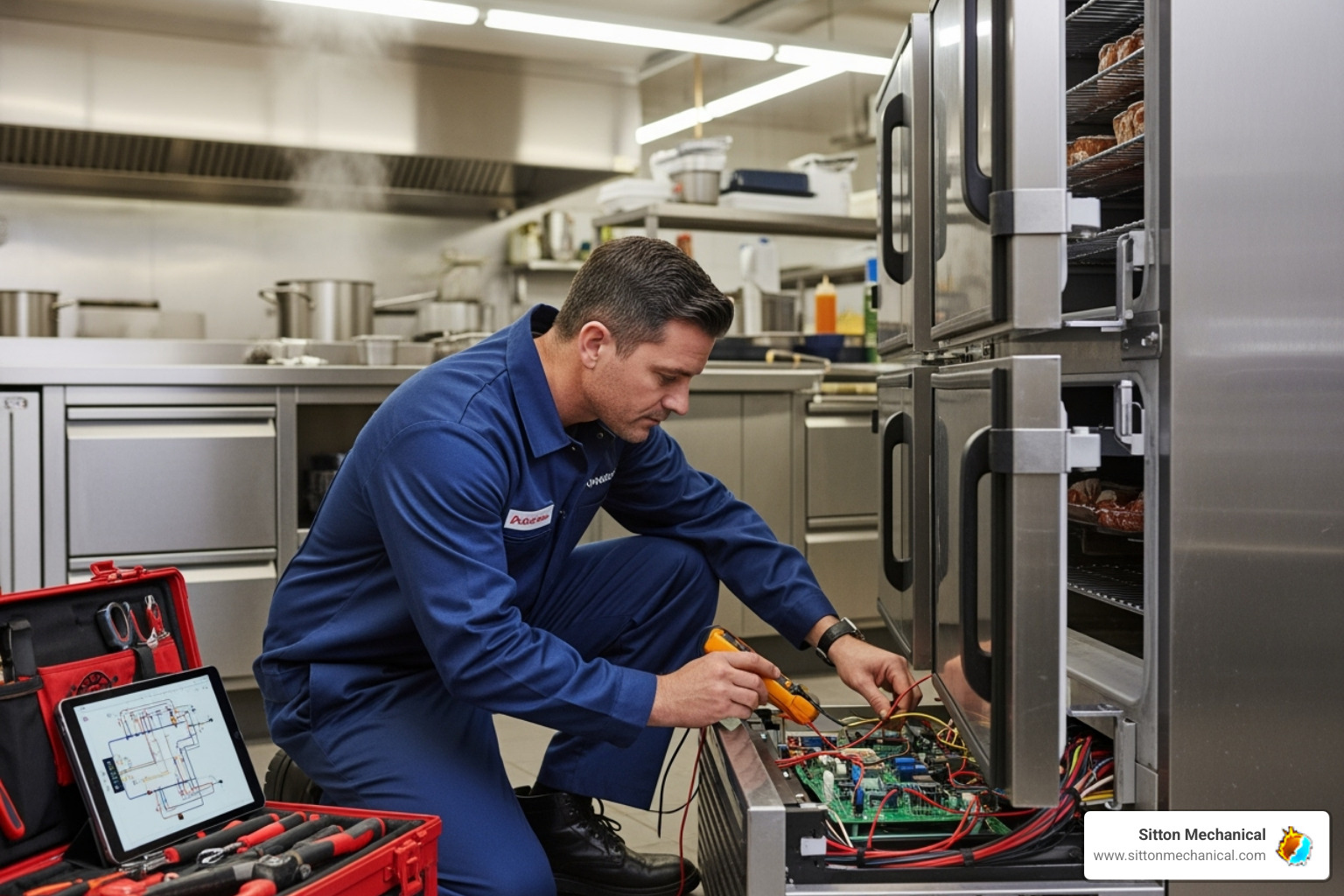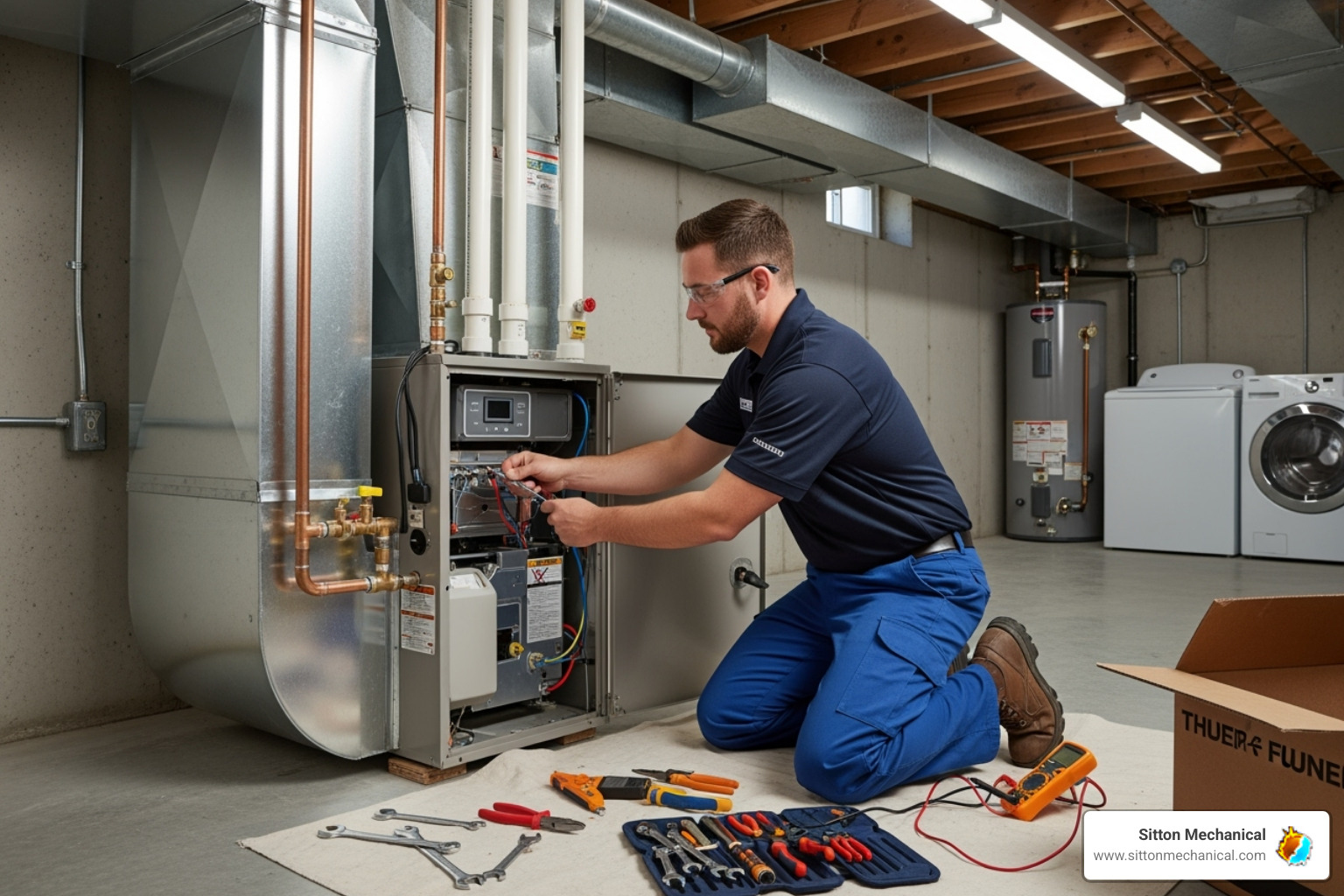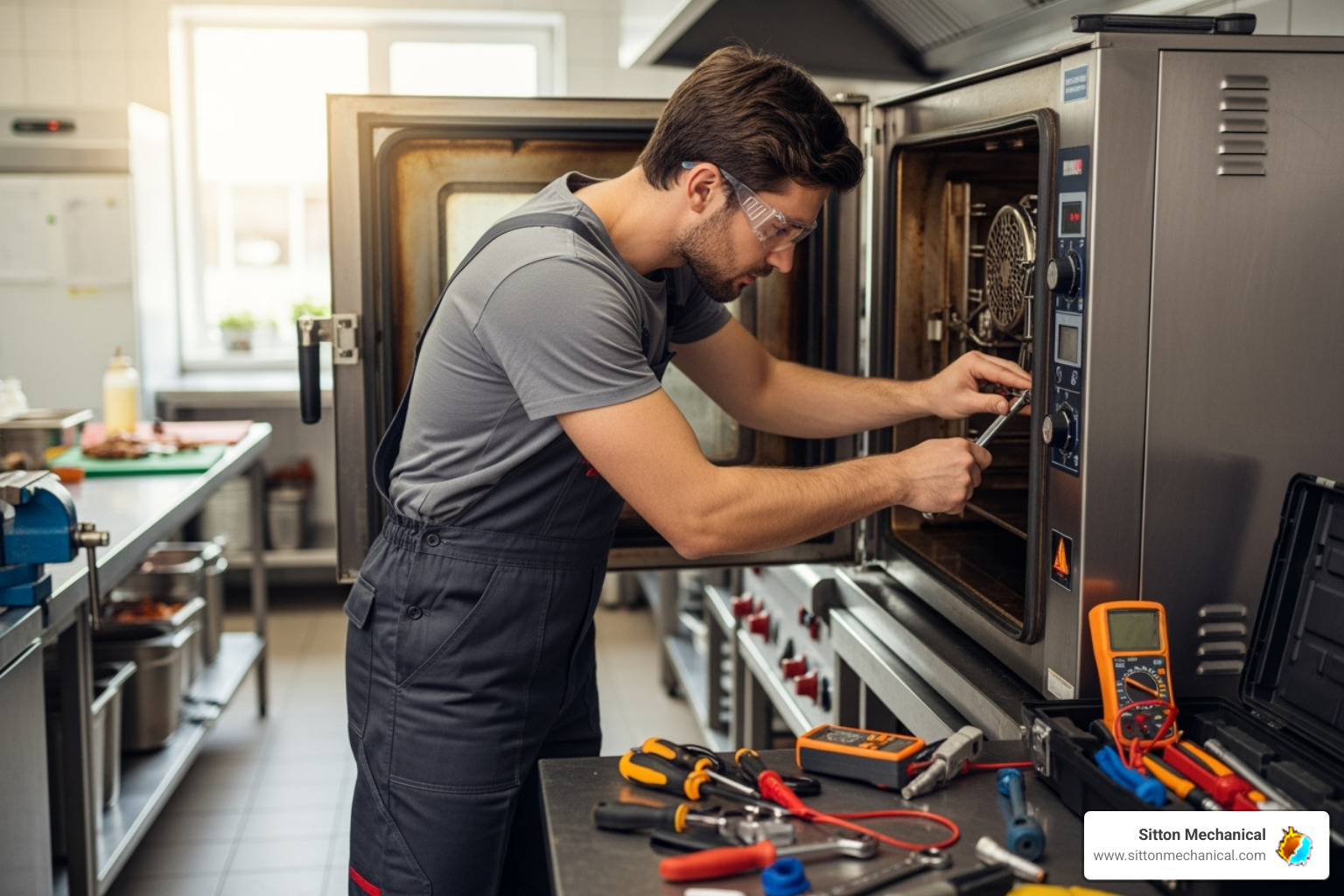Summer heat in Perkins puts a lot of pressure on your cooling system, and when the AC fan stops working, things get uncomfortable fast. With no airflow, it doesn’t matter if the rest of the unit is running — the cooled air just isn’t moving through your home. This can leave your rooms stuffy, warm, and hard to relax in. What may start as a small issue can grow into something more frustrating if ignored for too long.
Whether your AC fan isn’t spinning at all or it's running but making strange noises, getting to the root of the issue quickly can help you avoid further damage. Delays often lead to increased wear on other parts of the system, which drives up repair costs and may even shorten the life of your equipment. Identifying possible causes early is the first step in getting things back on track.
Common Reasons Your AC Fan Isn't Working
When the fan on your AC unit quits, there are a few typical reasons behind it. Most problems fall into one of a few categories, each with its own warning signs. Understanding these can help you respond faster and communicate what you're seeing when speaking with our technicians.
Here are the primary causes of AC fan problems:
- Electrical Issues
Faulty wiring, blown fuses, or tripped breakers are often behind fan failure. Capacitor malfunctions are common too. The capacitor gives the motor the boost it needs to start and run. If it's weak or dead, the fan may turn slowly, stop midway, or never start at all.
- Thermostat Problems
Your thermostat tells the AC system when to run the fan. If the connections inside it are loose or the settings are incorrect, the fan may not get the signal it needs. In some cases, the thermostat itself may be worn out and no longer communicating properly with the unit.
- Motor Troubles
Fan motors wear out with time. If yours starts to overheat, make odd noises, or stalls before fully spinning, there's likely a mechanical fault. Lack of lubrication, worn bearings, or a burnt winding could be the reason the motor can’t reliably turn the fan blades.
- Dirt and Debris
Build-up around the fan can keep it from moving freely. Blades packed with dust or leaves might look harmless but limit rotation or cause the motor to overwork. Something as simple as a thick layer of dirt on the fan cage can throw the balance off and bring things to a stop.
A homeowner in Perkins once scheduled service after noticing warm air blowing from their vents. Our inspection showed their outdoor unit’s fan wasn’t turning due to a seized-up motor, combined with clogged blades from a recent storm. That combination forced the compressor to work harder, almost causing a system-wide failure. Had they waited longer, the resolution might have required full replacement.
Every situation is different, but many AC fan issues follow similar patterns. Knowing where things usually go wrong helps you explain the problem clearly when our professionals arrive to inspect your unit.
Immediate Steps to Take When Your Fan Stops Working
If your AC fan has stopped working, there’s no need to panic, but it is important to act quickly. A non-working fan can lead to overheating, inefficient performance, or even a complete shutdown of your system. Taking a few immediate steps can reduce further damage and set the stage for a quicker fix.
Start here:
1. Shut off the system
Turn off your AC unit at the thermostat and the breaker. If the fan motor has seized or the capacitor has failed, keeping the unit powered on may overheat and damage other parts. Shutting it down prevents the system from trying to run when it can’t.
2. Verify thermostat settings
Check that the thermostat is on cool mode and not set to fan only or off. Make sure the target temperature is lower than the room temperature. If your thermostat uses batteries, pop in a fresh set and restart it.
3. Inspect your breaker
Go to the electrical panel and see if the AC breaker has tripped. If it has, reset it once. Avoid flipping it repeatedly, as that can cause more electrical damage. If the breaker trips again immediately, leave it off until it's inspected.
4. Look at the fan and surroundings
Walk out to your outdoor unit. Check for debris like twigs, grass, or leaves near the fan cage. If the fan blade is jammed by visible material, carefully clear the area. Do not reach inside or try to force the blades to spin.
These steps won’t resolve the root issue but help prevent the problem from growing worse before a technician checks the system. They also give our professionals more accurate starting points when diagnosing the problem.
Fixing Fan Issues Without Guessing
Once the system is off and visibly checked, repairs often involve replacing or repairing failed parts. The specific solution depends on what’s wrong under the surface. Our technicians generally focus their attention on these common fixes:
- Replace the fan capacitor if it no longer holds a charge or can’t provide adequate startup power
- Repair exposed or damaged wiring and connectors inside the unit or thermostat
- Calibrate or change out faulty thermostats that send bad signals or trigger the fan at the wrong time
- Clean or swap out clogged filters that restrict airflow and pressure the fan motor
- Lubricate the fan motor and replace bearings if grinding or squealing noises were present
- Change the motor completely for older systems where repair doesn’t guarantee long-term results
If multiple minor issues are happening at once, like a dirty fan in combination with a weak capacitor, the solution might require a careful combination of part replacements and tune-ups. Fixing just one part while ignoring others could cause the problem to come back shortly after.
Knowing When It's Time to Bring in Our Professionals
Small air conditioning issues can sometimes look simple. But when the fan stops and basic checks don’t solve the problem, delays quickly lead to larger breakdowns. Several warning signs let you know it’s time to bring in help.
- The fan starts and stops randomly or runs on its own schedule
- The outside unit makes humming or buzzing sounds but doesn’t spin
- There’s a burning odor coming from the vents or the outdoor system
- Your breaker trips more than once after resetting
- The motor feels hot to the touch or smells like it's overheating
Problems like these often point to capacitor, motor, or wiring damage. These are not safe to guess at or repair without experience. A trained technician can safely inspect and test each part without putting your system at risk.
Professional AC services in Perkins include full inspections, safe capacitor checks, continuity testing on motors, and matching replacement parts. It’s simpler and safer to get the correct fix the first time, rather than repeating trial and error with controls or breakers. An experienced technician also ensures the same issue won't come back next week due to a missed detail.
When the fan stops working, cooling comes to a stop. In a place like Perkins, especially during a hot August day, fixing the problem quickly and correctly makes all the difference in keeping your home safe and comfortable. Knowing the common causes, first steps to take, and when it’s time for help puts you in a better position to respond faster and smarter. Airflow problems don’t usually fix themselves, but they can be solved before they impact your whole system.
If your AC fan troubles have you worried about your home's comfort during these hot days in Perkins, Sitton Mechanical is here to help. Rely on our experts for prompt and reliable AC services in Perkins that address issues before they lead to bigger problems, and for a quick estimate or to book a service visit, please contact us today.
Ready to Transform Your Home?














